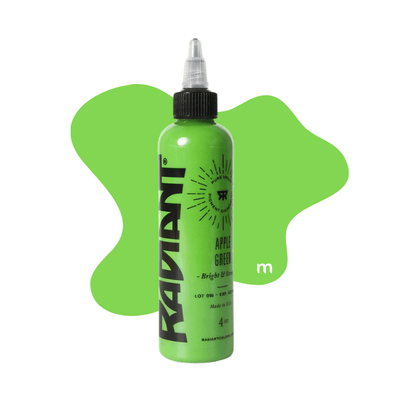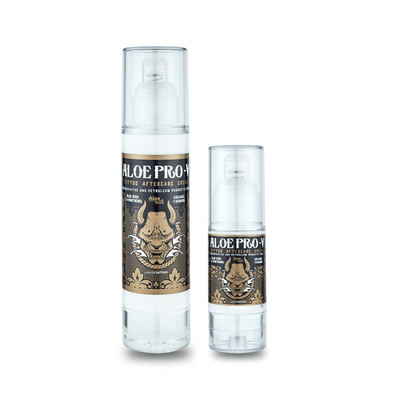The realm of tattoo artistry has witnessed a remarkable evolution, with one of its most intriguing aspects being the transformation of regrettable or outdated tattoos into stunning new artworks. This phenomenon, known as tattoo cover-up, is not just about hiding an unwanted design; it's about reimagining and repurposing the skin as a canvas for new, meaningful art.
This article delves into the creative and technical complexities of this process, highlighting how skilled tattoo artists turn past mistakes into masterpieces.
Why Choose a Cover-Up Tattoo? Is It Good to Cover Tattoos?
Choosing a cover-up tattoo is often a personal decision driven by a desire to transform an existing tattoo that no longer resonates with the individual's current identity, taste, or life situation. People opt for cover-ups to update artwork that has become aesthetically outdated, to erase memories associated with past experiences or relationships, or to rectify tattoos that were poorly executed or have faded over time. Cover-ups also provide a creative solution to change a tattoo without undergoing laser removal, which can be more expensive and painful.
For many, covering an old tattoo is not just about the physical alteration of the design but also a symbolic act of moving past a former phase of life, marking a new beginning, or reclaiming control over one's appearance.

Best Cover-Up Tattoo Ideas
The possibilities for cover-up tattoos are vast. Popular ideas include:
- Floral designs: Flowers can effectively cover up previous tattoos with their varied shapes and sizes. Popular choices include roses, lotuses, and peonies, which can be scaled and shaded to hide the old design.
- Animal motifs: Animals like lions, wolves, or eagles are not only majestic but also versatile in size and detail, making them great for covering larger or more intricate old tattoos.
- Geometric patterns: Geometric shapes and mandalas are excellent for cover-ups. Their precise lines and forms can camouflage the old tattoo while creating a visually striking new one.
- Abstract art: Abstract designs, with their flexible shapes and colours, can easily work around and incorporate elements of the previous tattoo.
- Cultural or mythological symbols: Elements like Celtic knots, tribal patterns, or mythological creatures can radically transform your old tattoo.
- Portraits and realistic images: If the existing tattoo is large enough, converting it into a portrait or a realistic scene can be a great option.
- Skyline or landscape: Natural scenes like mountains, forests, or city skylines can be designed to cover up and work with the contours of your existing tattoo.
- Space and celestial bodies: Imagery like stars, galaxies, planets, or the moon can be an appealing way to cover up an old tattoo, especially with their dark colours and the ability to blend.
- Text and quotes: Sometimes, transforming an old tattoo into a meaningful quote or text can be a unique approach. This works best if the original tattoo is relatively small or simple.
- Watercolour tattoos: The watercolour style, with its vibrant colours and blending techniques, can mask an old tattoo while adding a modern, artistic touch.

Common Cover-Up Tattoo Techniques
- Colour camouflage: Using colours that blend with or overpower the existing tattoo. Darker inks are often used to cover lighter colours, but skilled artists can incorporate lighter colours through clever blending and shading.
- Strategic design placement: Planning the new design to cover the most visible or prominent parts of the old tattoo, strategically hiding dark or detailed areas.
- Detail and texture overlap: Adding intricate details or textures can distract from the old tattoo, incorporating old lines into new elements.
- Contrast and shading: Using contrast and shading to draw attention away from the old tattoo, hiding the underlying design.
- Ink density and layering: Applying a dense layer of ink to obscure the old tattoo, sometimes requiring multiple sessions.
- Size and scale adjustment: Making the cover-up tattoo larger than the original to ensure full coverage.
- Incorporating negative space: Using uninked skin effectively to help mask the old tattoo, especially in tribal or geometric designs.
- Skin tone matching: Using inks that match the client's skin tone as a neutral base before applying the new design.
The Psychological Impact of Tattoo Cover-Ups
The psychological impact can be profound. Tattoos often reflect significant life events, memories, or aspects of identity. When a tattoo no longer resonates, it can cause discomfort or regret. A cover-up tattoo can offer emotional closure and a way to move forward.
- Positive reinforcement: Increasing self-esteem and confidence by transforming a negative reminder into art aligned with current identity.
- Emotional healing: Covering tattoos associated with past traumas or difficult periods can contribute to emotional healing.
- Creative expression: A new tattoo one loves is an empowering form of self-expression.
- Regret and grief: Covering a tattoo with sentimental value may bring mixed emotions, including loss or grief.
- Anxiety and stress relief: The process can shift focus from stress to excitement in creating new art.
- Social perception: A cover-up can change how others perceive the individual, particularly if the original tattoo had negative connotations.

How Long Should You Wait Before Covering Up a Tattoo?
It is crucial to wait at least 2 to 3 months after getting the original tattoo. This allows the skin to fully heal, the ink to settle, and reduces the risk of damage or suboptimal results. A professional artist will assess the skin and tattoo before proceeding.
What Tattoos Are Hardest to Cover Up?
The hardest tattoos to cover are dark, dense, and saturated colours, especially black. Large or highly detailed designs, areas with sensitive or stretched skin, and scarred tissue can make cover-ups challenging.
What Ink Colour is Best for Cover-Up Tattoos?
Darker colours work best, particularly black, for opacity over previous tattoos. Deep blues, greens, purples, and browns can also be effective depending on the existing tattoo.
The Art of Tattoo Cover-Ups
Tattoo cover-ups are a form of artistic redemption, turning regret into a work of art. Skilled artists can transform an unwanted tattoo into a masterpiece, symbolising change, growth, and resilience.





























































 Studio supplies
Studio supplies












 Power & batteries
Power & batteries







 Aftercare
Aftercare



















 Apprentice
Apprentice


 Piercing & jewellery
Piercing & jewellery







 PMU supplies
PMU supplies



 New arrivals
New arrivals
 Gift vouchers
Gift vouchers
 Shop all
Shop all










































